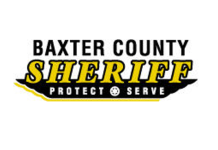Participants must enroll in in Regional Conservation Partnership Program by Jan. 13.
WEST PLAINS, Mo. – The Missouri Department of Conservation in conjunction with the United States Department of Agriculture’s Natural Resources Conservation Service (NRCS) invites landowners to receive technical and financial assistance through Regional Conservation Partnership Programs (RCPP). These programs benefit various types of habitats and are offered, by county, in select areas across the state. Applications must be received by Jan. 13, 2023 to be considered for this first round of funding.
Glades, woodland areas, and forests are the focus of this RCPP initiative which is available to landowners in some counties in south-central and southeast Missouri. Though the primary goal of this initiative is to help threatened species such as the Indiana bat, gray bat, Mead’s milkweed, Hine’s Emerald Dragonfly, Ozark hellbender and grotto sculpin; the habitat improvements resulting from this initiative will benefit a variety of species. This initiative is open to landowners in Bollinger, Butler, Carter, Iron, Madison, Oregon, Perry, Reynolds, Ripley, Shannon, St. Francois, St. Genevieve, and Wayne counties. The RCPP is a national program of the Natural Resources Conservation Service (NRCS) that consists of partner-driven efforts to solve natural resource challenges.
In addition to available NRCS funding provided in this program, MDC will provide 20 percent additional financial assistance for implementation of practices. The thrust of this initiative is to improve glade, woodland, and forest habitats. Here is a description of each type of habitat:
- Glade: Most glades are naturally occurring rocky clearings in a predominantly timbered landscape. Common landscape features of a glade are protruding rock formations and thin soil. The openness of a glade combined with a lack of deep soil creates an area that is hotter and drier. This creates a unique habitat that features a number of plant species that can only thrive in sunny, low-moisture conditions.
- Woodlands: The terms “woodlands” and “forests” are frequently used interchangeably, but these are different habitats. A woodland habitat is a landscape with sparse to intermittent tree cover. The patchy openings created by this fragmented canopy permits a dense ground-cover growth of wildflowers, grasses, and sedges.
- Forests: Forests have much denser tree cover which result in closed canopies that permit little light to reach the ground. There are often several overlapping layers of trees, with a mid-story and an understory comprising a variety of shade-tolerant shrubs and a sparse layer of soft-stemmed plants.
Questions regarding this program can be directed to the MDC private land conservationists in eligible counties. A listing of these can be found at:
https://mdc.mo.gov/contact-engage/local-mdc-contacts. Landowners in eligible counties can sign up for the Restoring Glade and Woodland Communities RCPP by contacting their local USDA-NRCS Field Service Center.






